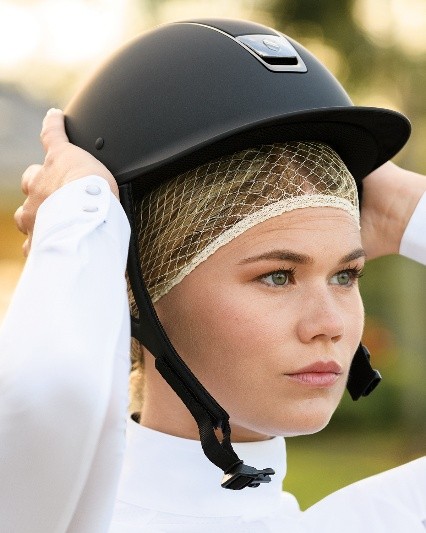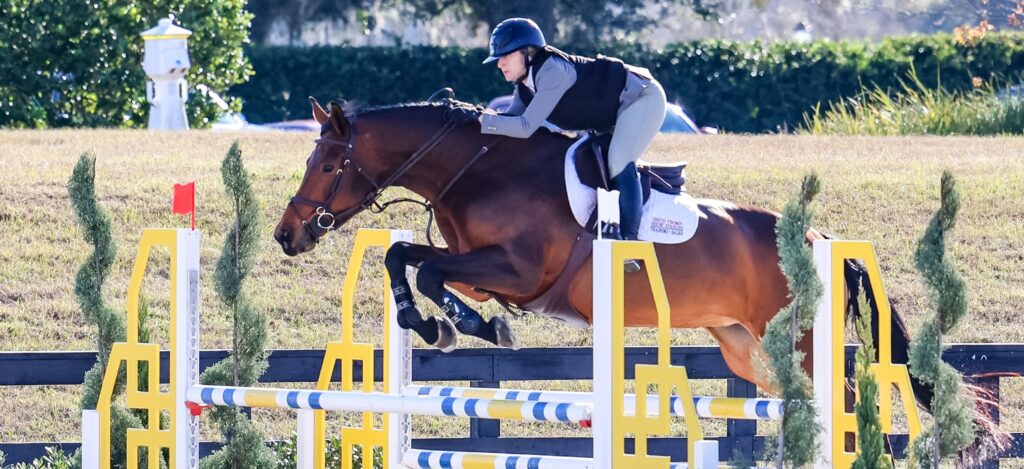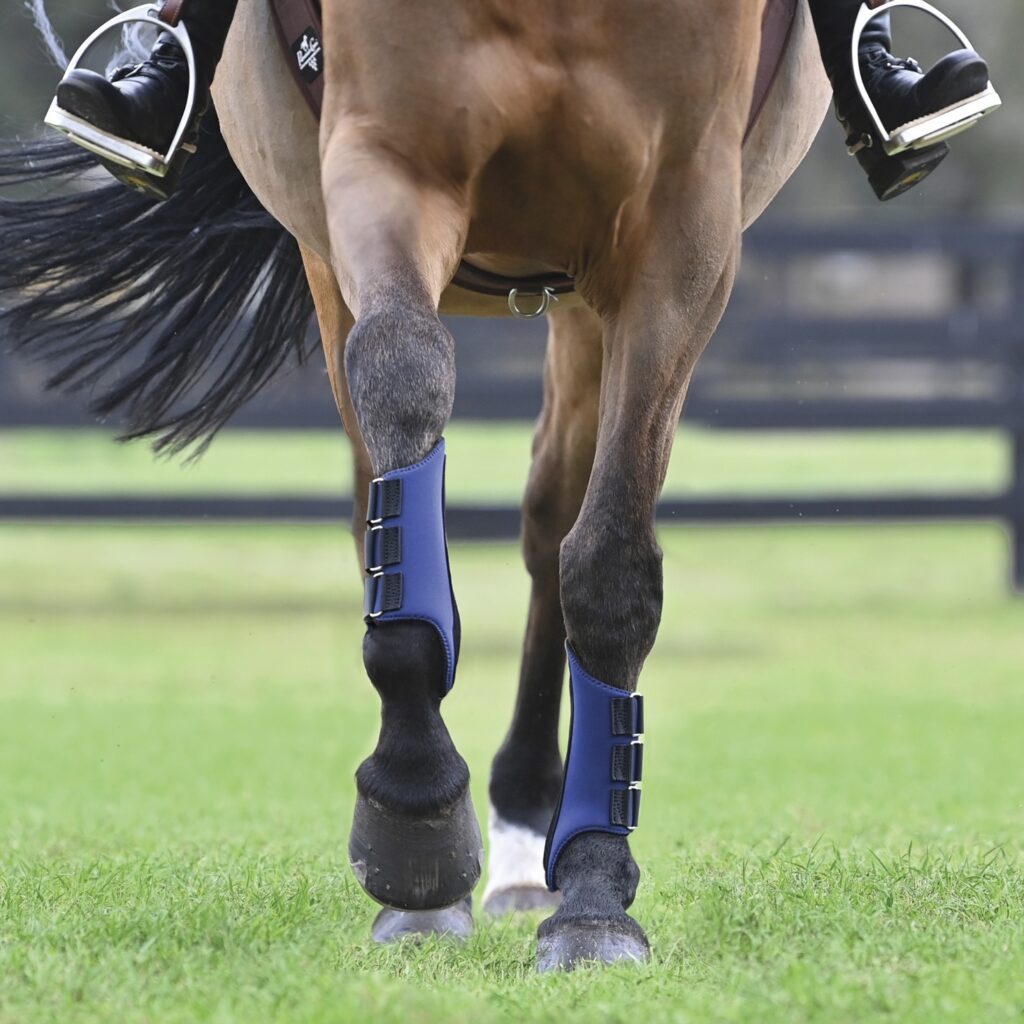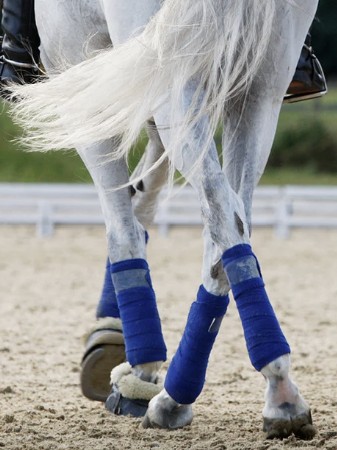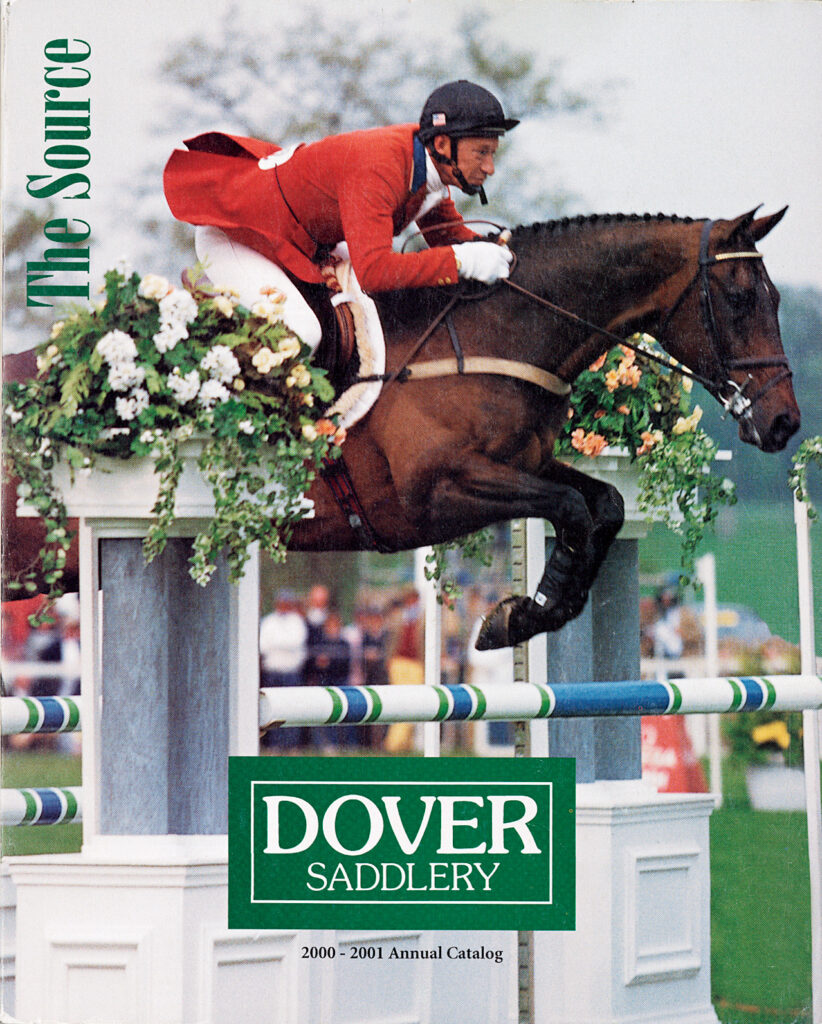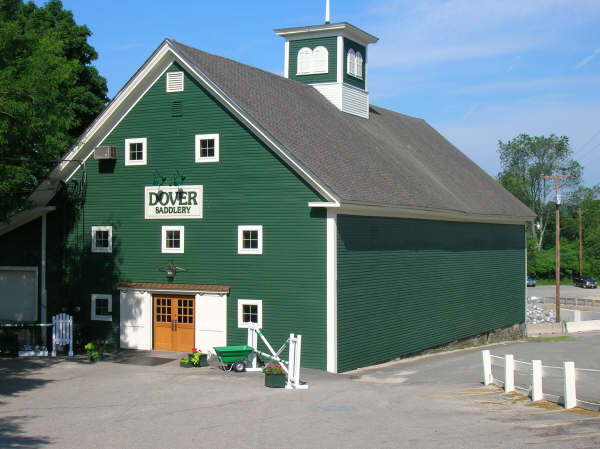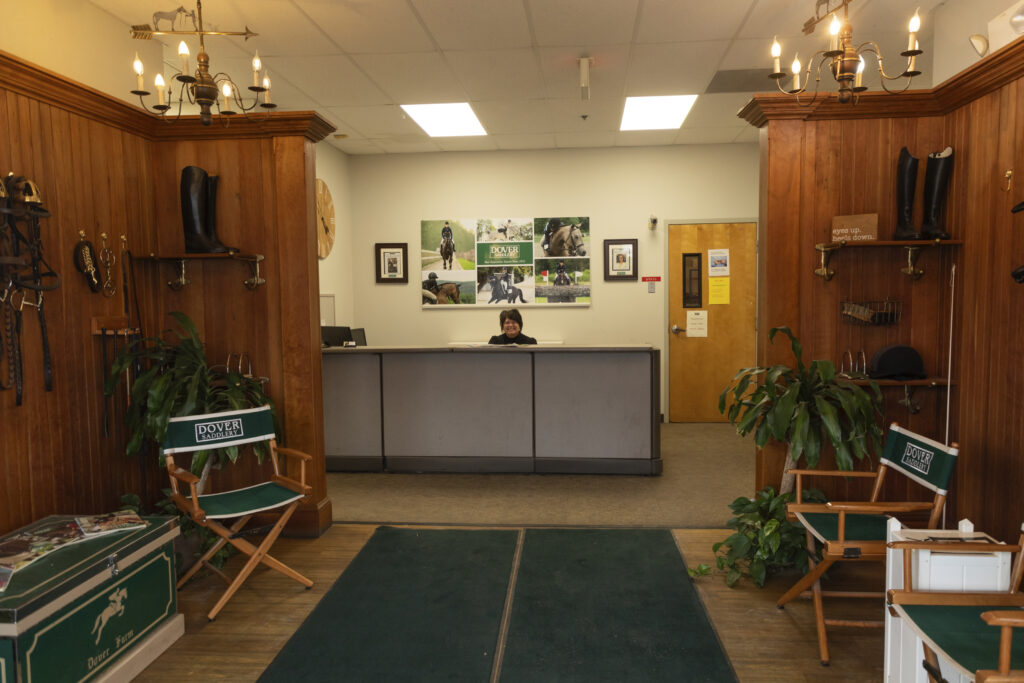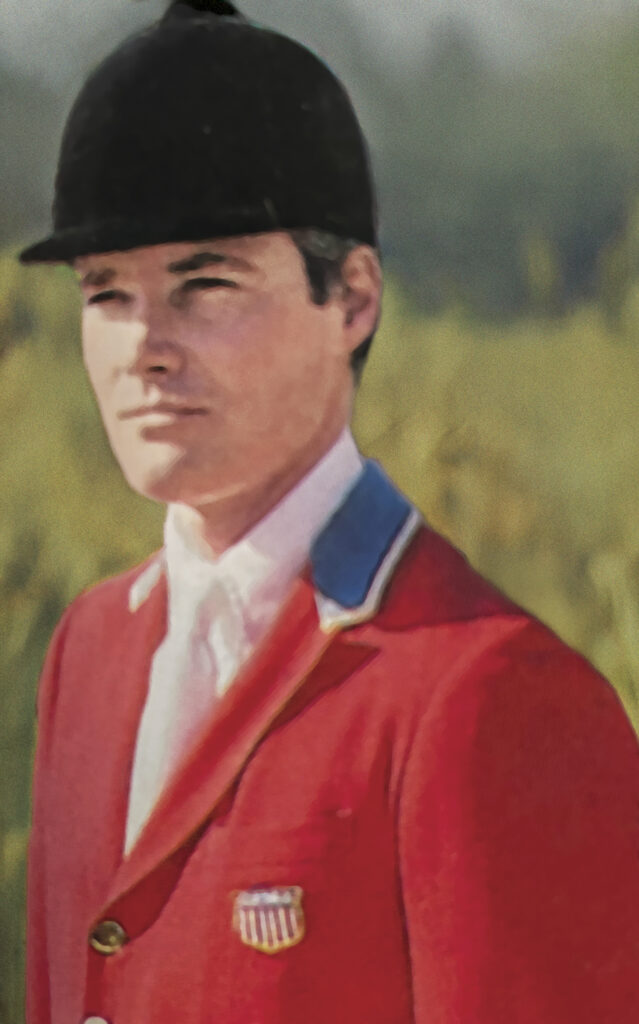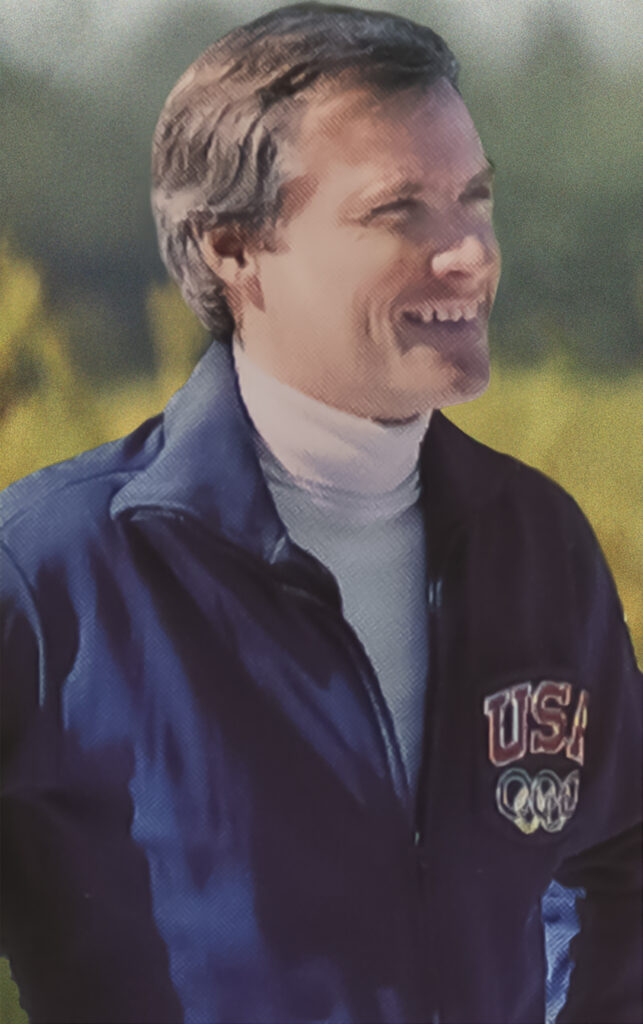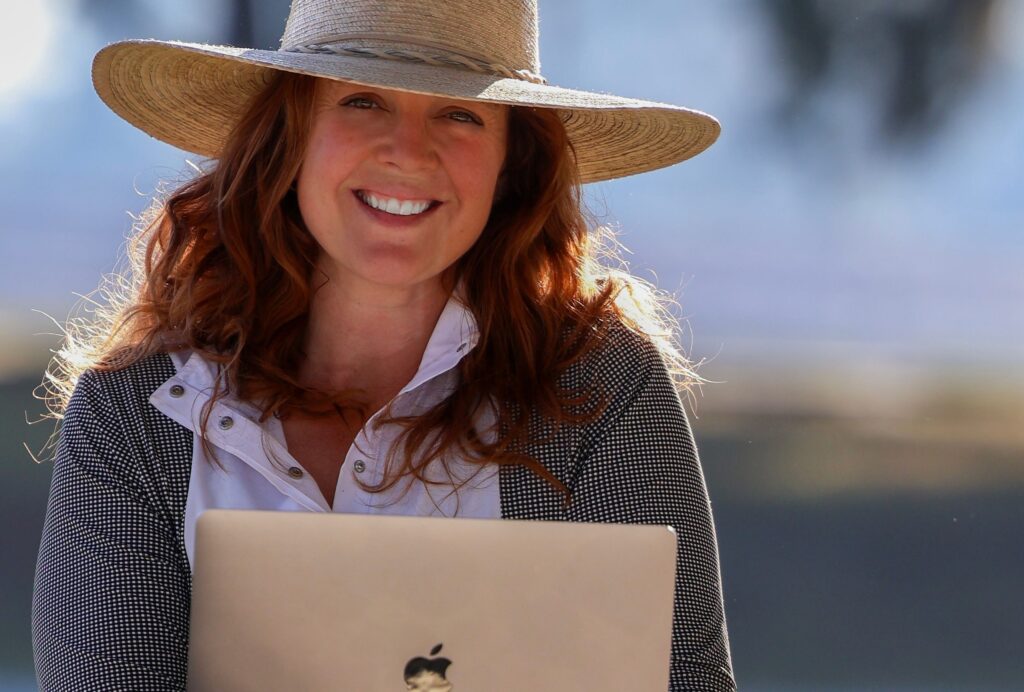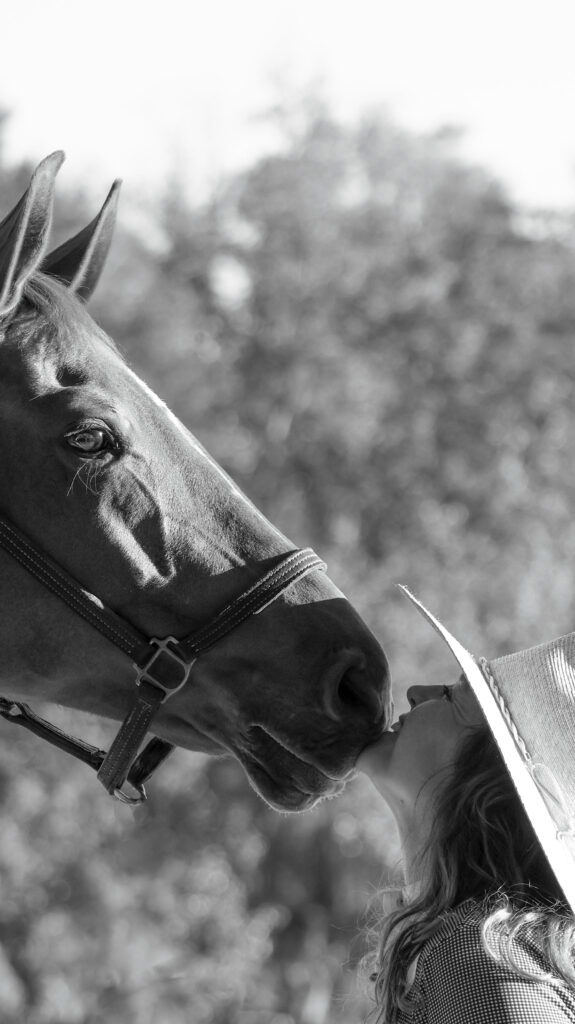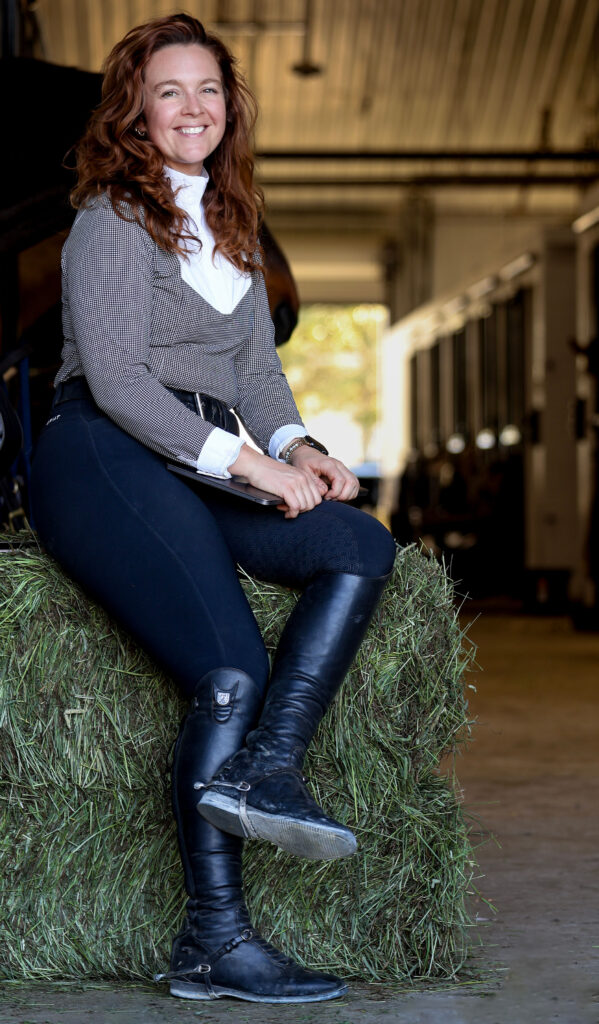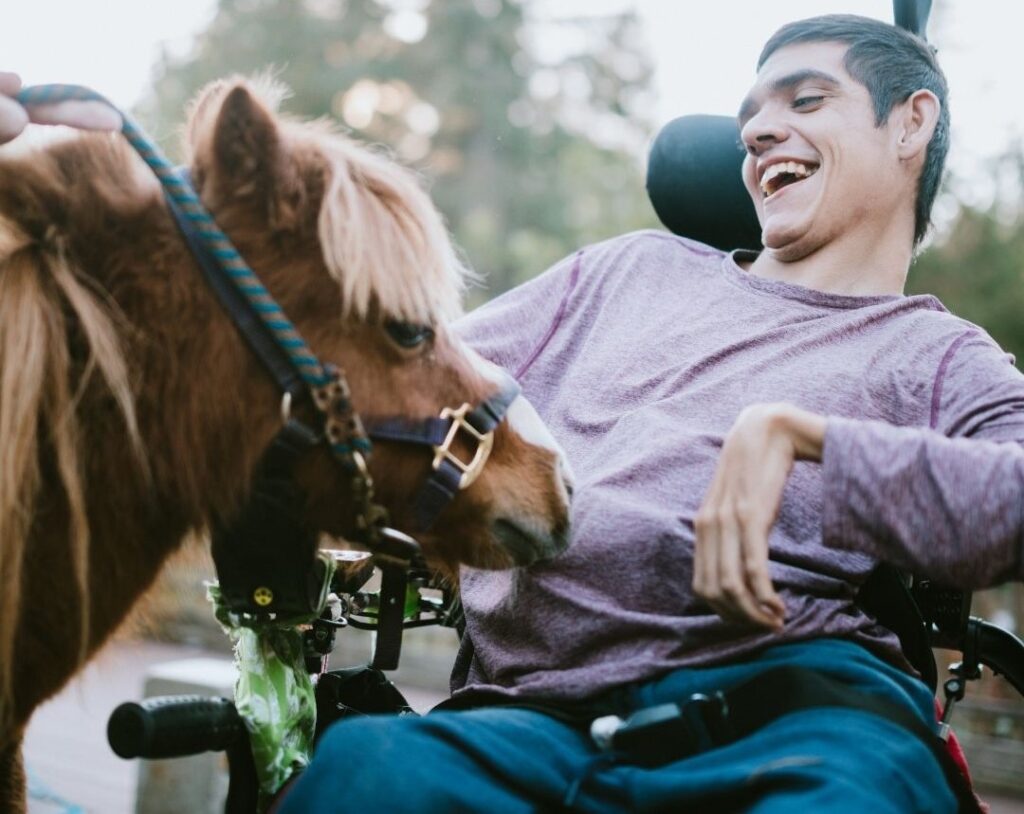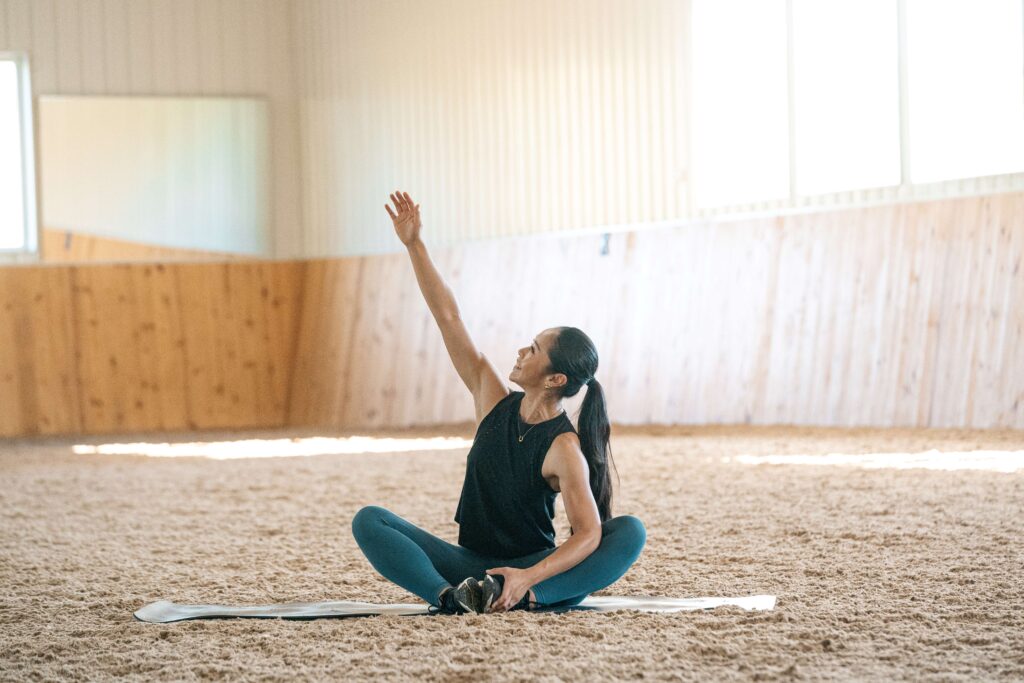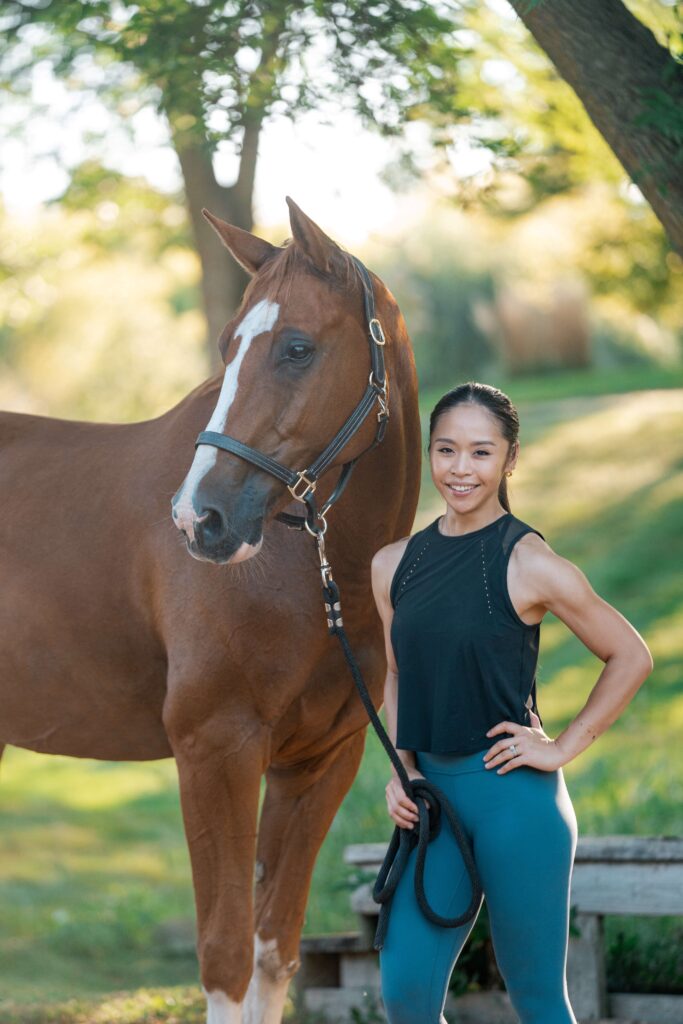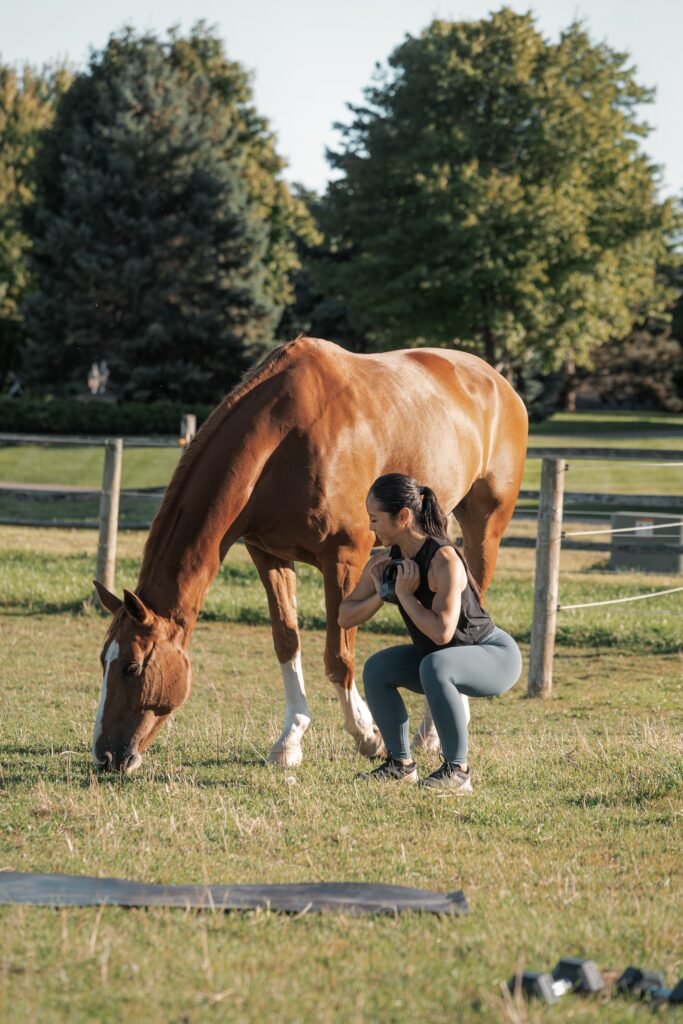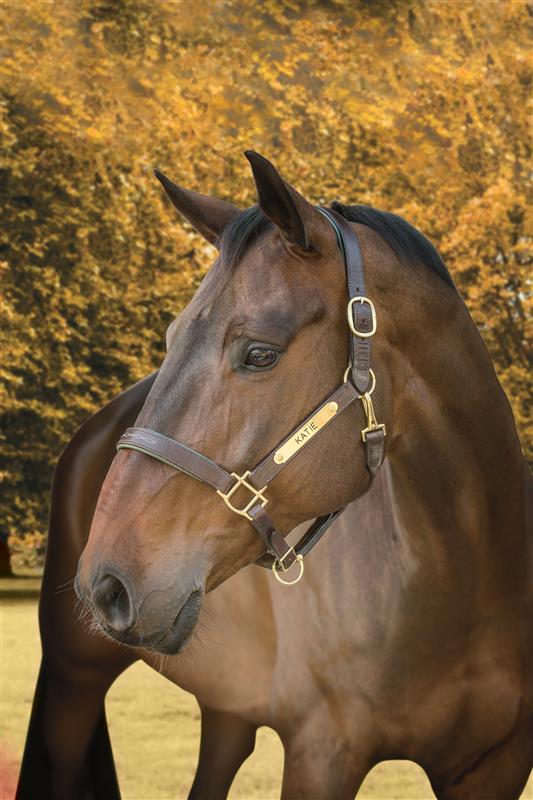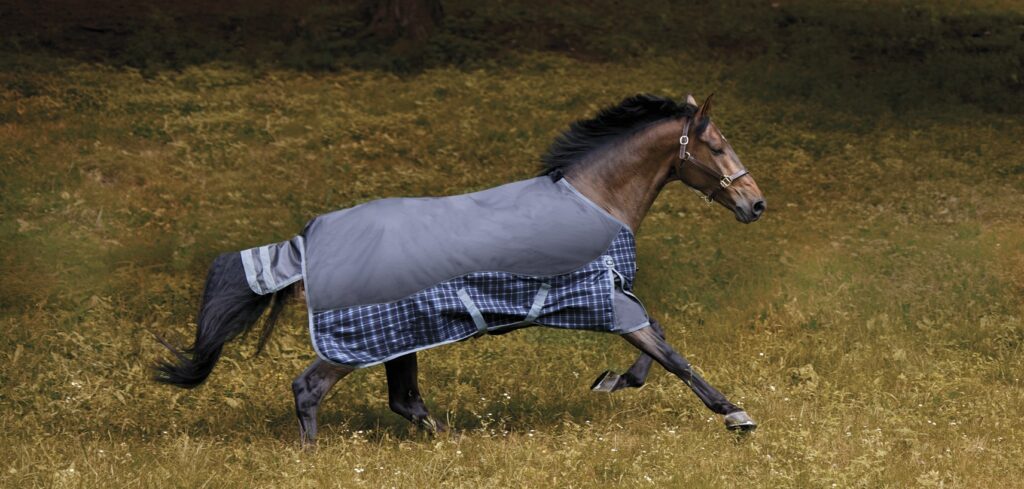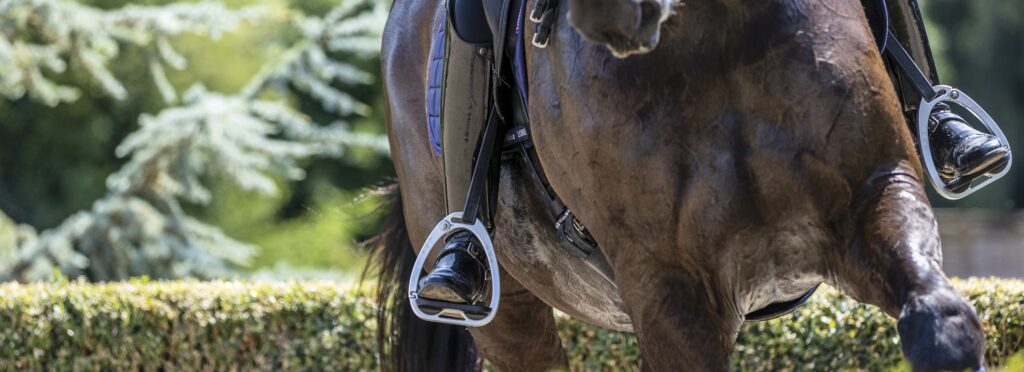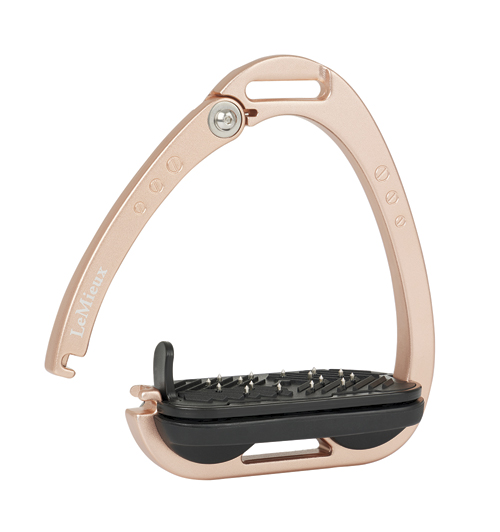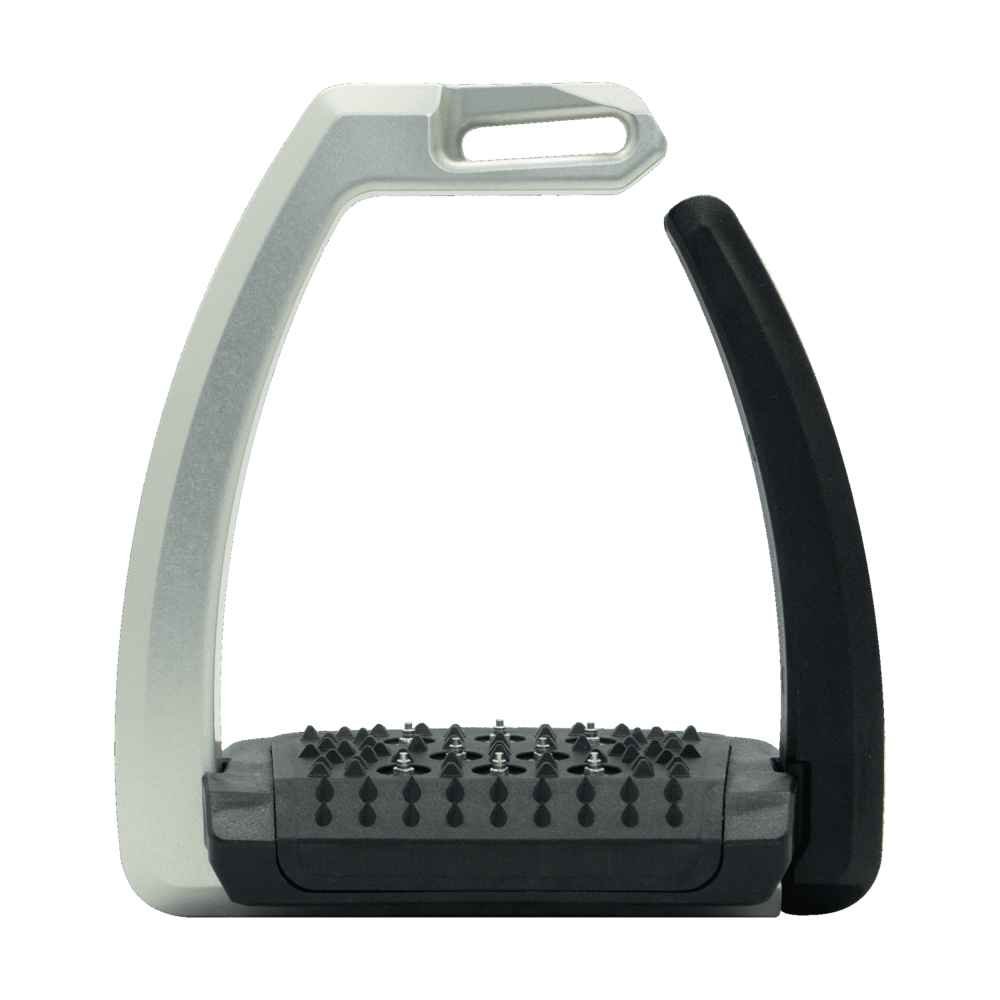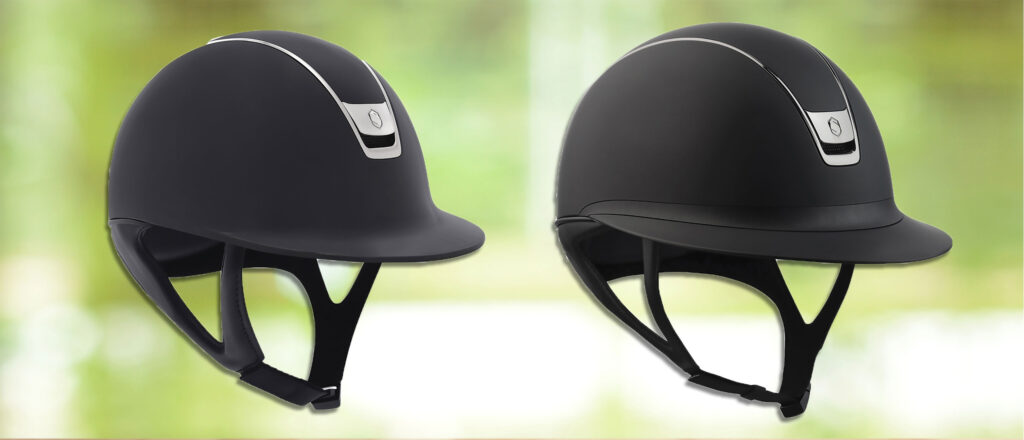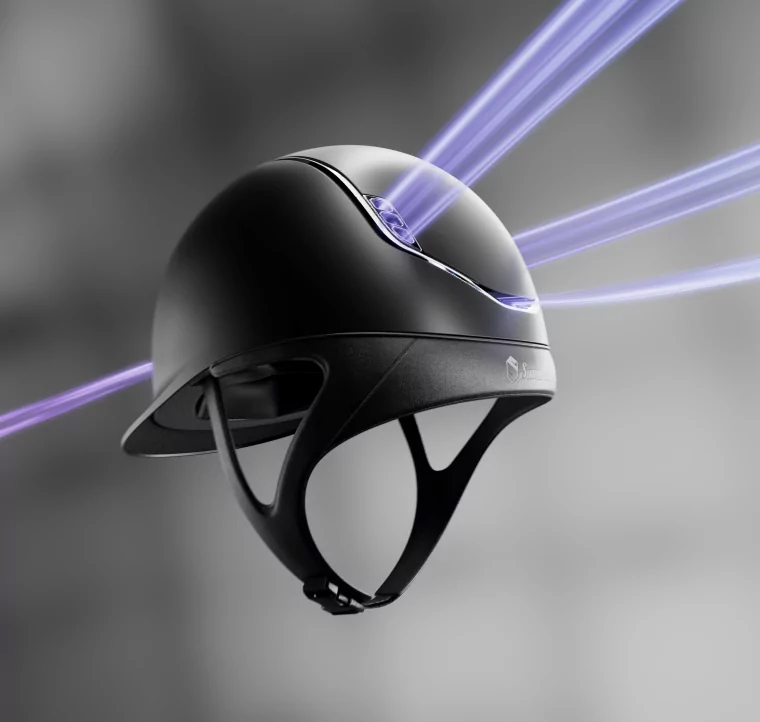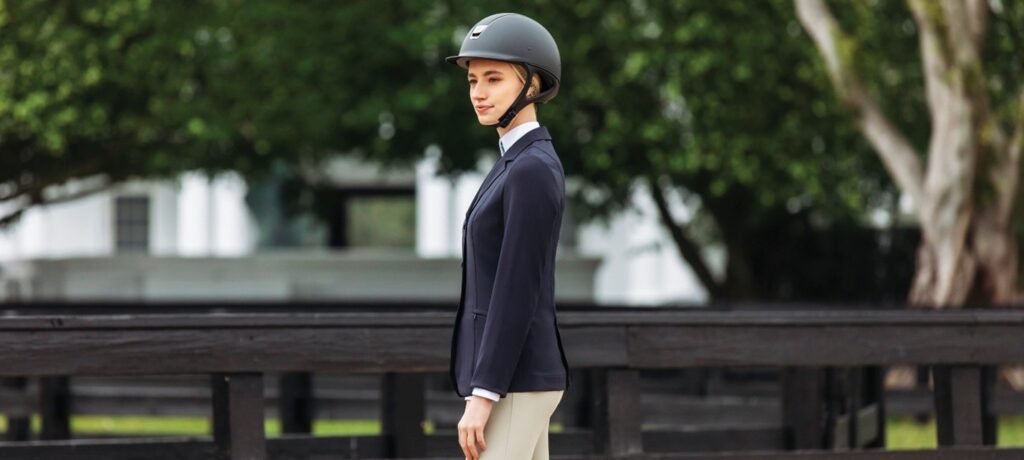
You’ve put in the hours, worked hard in the saddle, and now it’s time for your first horse show! One of the most important steps to feeling confident in the ring is making sure you’re dressed appropriately for your class. This guide focuses specifically on what to wear for Hunter/Jumper shows, so you and your horse can step into the ring looking polished, professional, and ready to shine.
Horse Show Apparel and Accessories
Riding Helmet: Your helmet should first and foremost meet the current safety standards. Look for a label indicating it is ASTM F1163-15/SEI Certified, and most importantly, make sure it fits properly. A well-fitting helmet should sit snugly, fasten securely, allow a clear line of vision, and stay in place without shifting.
When it comes to style, opt for a simple design in black or dark blue. If you’re showing in Hunters or Equitation, a matte or suede finish is preferred for a traditional look. If you’re competing in the Jumper division, you have more flexibility and can consider a glossy finish or tasteful crystal embellishments.
Example: Tipperary Royal Helmet
Show Shirt: Any comfortable shirt that allows freedom of movement can work for riding, but show shirts are specifically designed with performance fabrics that offer added benefits. These lightweight materials wick sweat, provide breathability, stretch easily, and often include cooling technology or mesh inserts. Many also offer UV protection, helping to shield your skin from the sun.
Show shirts are designed with a formal collar, which may button or feature a hidden-style zipper, to create a clean, polished look when worn under a show coat.
For Hunter and Equitation classes, your show shirt should be white or a very subtle color where it is visible under your coat. Traditional show shirts are long-sleeved, but in warm weather, short sleeves may be acceptable—just be cautious. If jackets are waived due to heat, you may end up showing in just your shirt, so plan ahead as showing in short sleeves alone is not preferred.
In the Jumper division, there’s more flexibility. You can opt for a brighter-colored show shirt, and depending on the class specifications and your trainer’s preference, a jacket may not be required.
Example: IconEQ Showtime Long Sleeve Show Shirt
Jodhpurs: Jodhpurs are the traditional choice for young riders (generally 12 and under) for hunter and equitation classes. Paired with paddock boots and garter straps, create an age appropriate and comfortable look that the judges expect at horse shows. They are designed with an elastic strap that goes under the boot to keep them in place and a knee patch for grip and protection from the stirrup leather.
Example: IconEQ Girls’ Wellesley Competition Jodhpur
Breeches: For riders over the age of 12, breeches are the appropriate choice for the show ring. The color is typically tan or white depending on your discipline and class. Look for breeches with reinforced or grippy knee patches, which provide added stability and support in the saddle. Your show shirt should be neatly tucked in and paired with a belt for a polished, ring-ready appearance.
Example: IconEQ Dalton Tech Legacy Knee-Patch Breech
Show Coats: Choosing a show coat for you or your child’s first horse show is an exciting milestone! The most important factor is fit. A tailored coat helps achieve a polished look and makes the rider feel confident. For children, consider leaving a bit of room to grow; many brands offer adjustable features to extend wear. It’s also important to consider fabric; some coats offer no stretch, while others are designed with performance materials for added comfort. This often comes down to personal preference and the season or weather. Whether for a child or adult, be sure to stick to classic colors like navy, black, dark grey, or green, which are always appropriate for hunters and equitation. If you or your child is showing in the jumper ring, there’s more flexibility with color and style. Always check with your trainer for their preferences and guidance.
Examples: RJ Classics Girls Hampton Basic Show Coat
Examples: Kerrits® Ladies Stretch Competitor Koat
Riding Boots
Paddock Boots: Children about 12 years or younger should wear paddock boots and garters. The heel is a safety measure that helps prevent a foot from sliding through a stirrup. The boot or riding shoe should preferably be made of leather or synthetic leather (as opposed rubber) for overall foot protection. Zip- or lace-front paddock boots are an acceptable choice for showing. You may chose either brown or black as long as the garters match.
Garters: Leather Jodhpur Garter Straps complete a show ensemble in classic style. Use of garter straps helps keep the legs of jodhpur pants in place as well as protect the inside of the knee from rubbing against the stirrup leather while riding.
Example: Riding Sport™ Kids’ Provenance Zip Paddock Boots
Example: Leather Jodphur Garters
Tall Boots: Your boots are an essential part of your show apparel, offering both practical benefits and traditional style. Tall boots are the formal choice for the hunter, jumper, and equitation rings. A field boot has laces and is the traditional choice for the hunter ring while a dress boot has no laces and are often seen more in the jumper and equitation ring. Tall boots provide important ankle support, protect the leg from stirrup leathers, and the structured heel helps prevent your foot from slipping through the iron. Be sure your boots are clean and polished to maintain a professional appearance in the show ring.
Example: Ariat Heritage Contour II Field Boots
Pro Tip: Invest in comfortable, well-fitting apparel rather than focusing solely on the most “popular” brand. A proper fit will help you look polished—and more importantly, ride your best. Ill-fitting clothing, helmets, or boots can be distracting and uncomfortable, taking your focus away from your performance in the ring.
Additional Horse Show Accessories
Riding Gloves: Thin and stretchy, riding gloves protect your hands from friction caused by the reins. Key contact areas are reinforced for added durability and grip. For the show ring, choose black or navy gloves that match your show coat to create a streamlined look from your arm to the reins. This subtle coordination helps achieve a more polished and professional appearance.
Example: SSG® Soft Touch™ Glove
Hair Bows: Pony bows are part of the classic show ring look for young riders. Paired with two low braids they help create a neat, and age-appropriate fun look for the leadline, short stirrup, walk-trot and other pony divisions. They come in various colors and styles and allow the rider to match their outfit and show a subtle touch of personality.
Example: Belle and Bow Equestrian Hair Bows
Hair Net: A hair net helps keep all of your hair neatly tucked inside your helmet. Not only does it prevent distractions from flyaways and hair in your face, but it also creates a polished, professional look in the show ring. Hair nets are made from stretchy, durable elastic and come in a variety of colors to match your hair for a seamless appearance.
Example: One Knot Hairnet
Pro Tip: Invest in comfortable, well-fitting apparel rather than focusing solely on the most “popular” brand. A proper fit will give you that polished look and more importantly, help you ride your best. Ill-fitting clothing, helmets, or boots can be distracting and uncomfortable, taking your focus away from your performance in the ring.
Shop our entire selection of show apparel here.
If you have any questions on fitting you or your young rider with show apparel, we’re here to help. We’re particularly careful about helmet fit. We also take pride in offering starter items at a great value, perfect for growing riders or those just getting introduced to equestrian sports. Stop by any of our Dover Saddlery retail locations or give us a call! On our website, our Equestrian Library is also a great free resource of information.
Share your show photos with us on Instagram and Facebook by tagging @doversaddlery!












